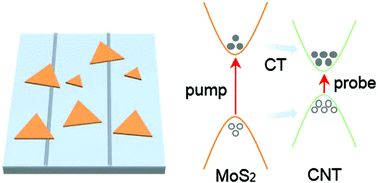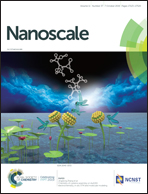Strong-coupled hybrid structure of carbon nanotube and MoS2 monolayer with ultrafast interfacial charge transfer†
Abstract
Hybrid structures assembled by van der Waals (vdW) interactions greatly expand the conventional material platforms, as there is no constraint of lattice matching in the materials design. However, a general challenge lies in the controllable assembly of 1D–2D hybrids with strong-coupled interfaces, because the interaction area is very small and is easily disturbed by exotic molecules. Here, we report the direct construction of 1D carbon nanotube-2D MoS2 monolayer hybrids with strong interfacial coupling using a sequential chemical vapour deposition growth method. The strong mechanical and electronic couplings between the nanotubes and MoS2 are unambiguously illustrated from the Raman-mode frequency shift and ultrafast interfacial charge transfer (∼100 fs). The findings in this work will boost the mass fabrication of 1D–2D vdW hybrid materials with controllable interfacial geometry and coupling strength, and pave the way for their future applications in electronics, optoelectronics and photovoltaics.

- This article is part of the themed collection: 2019 Nanoscale HOT Article Collection


 Please wait while we load your content...
Please wait while we load your content...